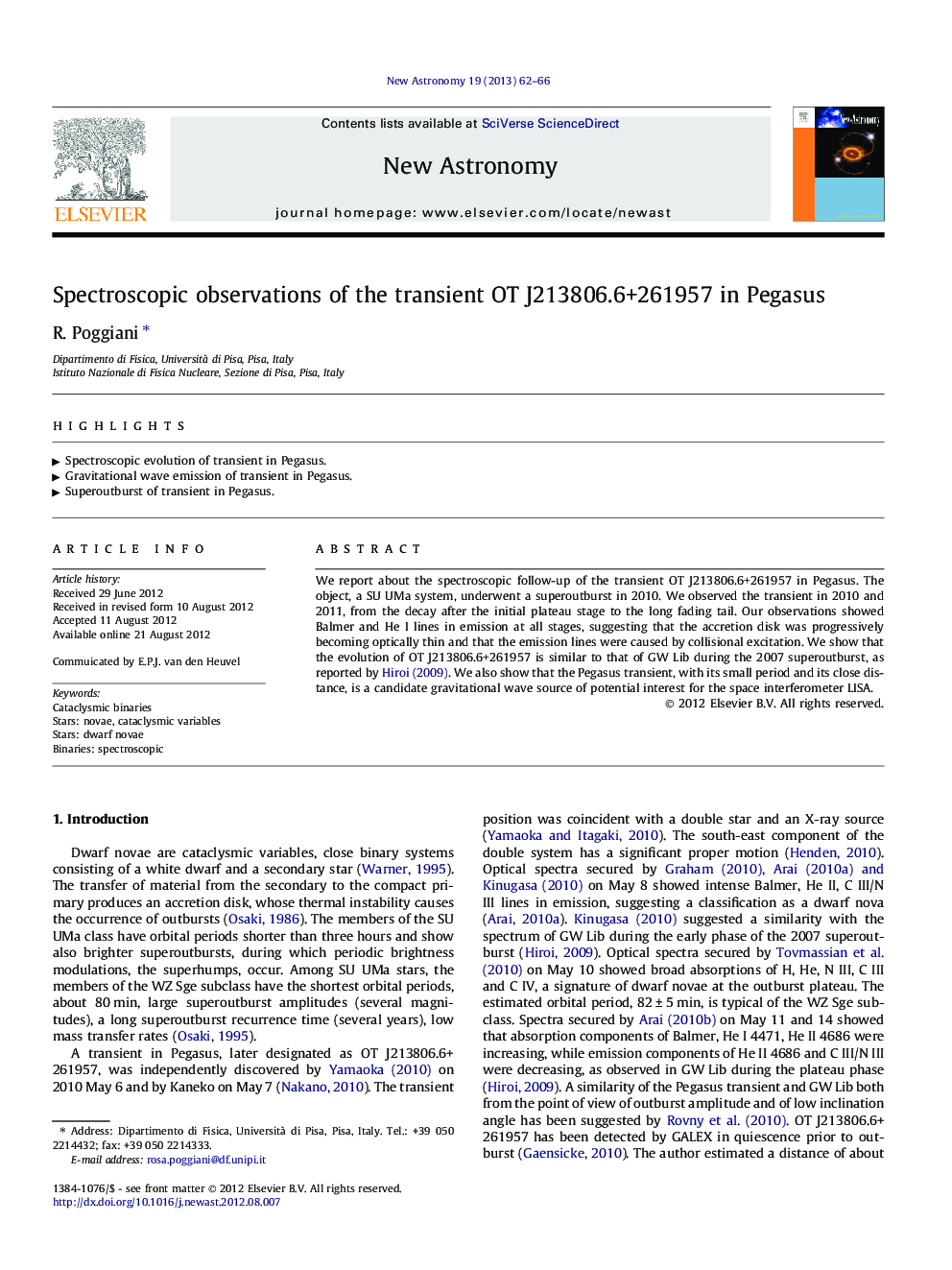| Article ID | Journal | Published Year | Pages | File Type |
|---|---|---|---|---|
| 1779123 | New Astronomy | 2013 | 5 Pages |
We report about the spectroscopic follow-up of the transient OT J213806.6+261957 in Pegasus. The object, a SU UMa system, underwent a superoutburst in 2010. We observed the transient in 2010 and 2011, from the decay after the initial plateau stage to the long fading tail. Our observations showed Balmer and He I lines in emission at all stages, suggesting that the accretion disk was progressively becoming optically thin and that the emission lines were caused by collisional excitation. We show that the evolution of OT J213806.6+261957 is similar to that of GW Lib during the 2007 superoutburst, as reported by Hiroi (2009). We also show that the Pegasus transient, with its small period and its close distance, is a candidate gravitational wave source of potential interest for the space interferometer LISA.
► Spectroscopic evolution of transient in Pegasus. ► Gravitational wave emission of transient in Pegasus. ► Superoutburst of transient in Pegasus.
